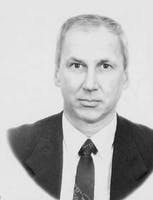Valeri Plotnikov
Consultant
MoscowMikhail G. Rudin
Raytheon Engineers & Constructors
HoustonVladimir S. Medvedev
Russian Petroleum Industriaists Association
Moscow
Russia's oil companies are finding various routes to growth and profitability as reform moves their country away from its legacy of central economic planning.
Privatization of old state-owned monopolies has produced a number of oil and gas enterprises. The companies are increasingly important to regional and state development.
Last year, with privatization nearly complete, Russia's oil industry included 11 large companies, four more than could be identified the year before.
Using criteria of the bank Menatep, the authors have ranked the Russian companies on the basis of a weighted average of eight financial and operational measures as reported for 1995: reserves, production of oil and gas, refining capacity, oil and petroleum product sales, depth of refining (conversion capacity), volume of exports, market capital, and total assets.
Other ranking methods produce different results. For example, Lukoil holds the No. 1 position here (see chart). In a report last year by Petroleum Intelligence Weekly based on 20 performance criteria, Lukoil ranked fourth behind Sidanko, Surgutneftegaz, and Yukos.
Profiles of the companies, in order of the authors' ranking of them, follow.
No. 1 - Lukoil. Oil production by Lukoil totaled 56.6 million metric tons in 1995.
The company owns reserves and operates in most of Russia's key oil areas: Western Siberia, the Volga-Urals area, and the Baltic region. It represents a combination of seven oil producers (Kogalynmeftegaz, Langepasneftegaz, Urayneftegaz, Permneft, Kaliningradmorneftegaz, Nizhnevolskneft, and Astrakhanneft') and two refineries (Perm and Volgograd). In addition, it combines eight nonoperating companies, including oil product distributors, marketing concerns, and construction and repair enterprises.
Lukoil leads Russian companies in production and exports, the latter of which totaled 14 million tons of crude in 1995. Its Perm and Volgograd refineries have relatively deep processing capacity.
In southwestern Russia, the legal integration of Nizhnevolskneft and Astrakhanneft gives Lukoil a practical monopoly in production and marketing. It also positions Lukoil close to export routes from Kazakhstan and Azerbaijan.
No. 2 - Yukos. With oil production of 36 million tons/year through Yuganskneftegaz and Samaraneftegaz, Yukos is second to Lukoil in this category but beats it in reserves, estimated at more than 2 billion tons.
Development of Priobskoye field in Western Siberia with Amoco Corp. will boost Yukos' total production to more than 40 million tons/year.
The company is concentrating production, distribution, and marketing in areas where it is strong: Tyumen, Samara, Orel, Tambov, Lipetsk, Penza, and Ulyanovsk.
Yukos exported about 8 million tons of crude in 1995. Like Lukoil, it plans to merge its affiliates into one holding company and plans a stock swap to accomplish the merger in 1996.
No. 3 - Siberian Oil Co. Emerging last year in a shake-up by Russian President Boris Yeltsin, Siberian Oil Co. (Sibneft) combines Tyumen producer Noyabrsk neftegaz, the Omsk refinery, geological enterprise Noya- brskneftegazgeologiya, and product distributor Omsknefteprodukt.
All were formerly parts of Rosneft.
Sibneft affiliate Noya- brskneftegaz produces 20 million tons/year from West Siberia. The Omsk refinery, with output of 15-20 million tons/year and pipeline links to eastern Kazakhstan, is Russia's largest.
The company exported about 5 million tons of crude in 1995.
Although operating upstream mainly in the Omsk region, Sibneft has the potential to expand in the Urals and southern West Siberia.
No. 4 - Surgutneftegaz. Producing more than 33 million tons/year from West Siberia, Surgutneftegaz also operates the Kirishinefteorgsintez refinery near St. Petersburg. The refinery processed 11.6 million tons of crude last year.
Surgutneftegaz exported about 8 million tons of crude in 1995 and will remain Russia's No. 3 producer. It holds large reserves and has distribution facilities in the northwestern region.
No. 5 - Sidanko. Production by Sidanko will continue to rank among Russia's top five after acquisition from Rosneft of Saratovneftegaz, which produced 1 million tons of crude last year. Sidanko's other producing subsidiaries were Chernogorneft, Varyeganneftegaz, Kondpetroleum, Varyeganneft, Novosibirskneftegaz, and Udmurtneft.
Total production is 23 million tons/year, exports about 5.5 million tons/year of crude.
The company holds reserves in western Russia through Kondpetroleum, eastern Russia through Varyeganneftegaz, and central districts of West Siberia through Chernogorneft. Its Saratovneftegaz and Udmurtneft units hold reserves in the Volga region.
Sidanko owns the Saratov, Khabarovsk, and Angarsk refineries, which need substantial repairs. Managers want to make the company a base for establishing an international group for development of resources of western and eastern Siberia and the Russian Far East.
No. 6 - Rosneft. With output of about 13 million tons/year, the formerly state-owned holding company Rosneft retains Purneftegaz and some refineries. Purneftegaz produces 8 million tons/year.
Rosneft also holds reserves in Sakhalin and has significant potential as a distributor.
No. 7 - Tyumen Oil Co. Another company formed in last year's shake-up by Yeltsin is Tyumen Oil Co. It combines Nizhnevartovskneftegaz (21 million tons/year of production), Tyumenneftegaz (1.5 million tons/year of production), the 13 million ton/year Ryazan refinery, and 12 oil product distributors in central provinces such as Tula and Kaluga. The company exported about 5.4 million tons of crude in 1995.
No. 8 - Slavneft. Subsidiaries Megionneftegaz and Megionneftegazgeologiya produce 13 million tons/year of oil in the Tyumen region for Slavneft. The company also operates the 4-4.5 million ton/year Mozyr refinery in Belarus, where it operates 12 product distributors in the Southeast and Southwest.
Slavneft exported 2.4 million tons of crude in 1995.
No. 9 - Orenburg Oil Co. As a regional holding company, Orenburg Oil Co. (Onako) combines Orenburgneft, which produces 7.7 million tons/year, the Orsk refinery, and Orenburgnefteprodukt. It exported about 2 million tons of crude in 1995.
Thermo Design Engineering is to build a 2 billion cu m/year gas processing plant in three phases for Onako in the Pervomaysk area of southern Orenburg. Completion is scheduled for 1998.
Onako proposes to merge with Kazakh producer Aktyubinskneft, which sends much of its crude oil production by rail to the Orsk refinery. If the merger proceeds, Aktyubinskneft would be the first oil producer in the former Soviet Union outside Russia to become part of a Russian company.
No. 10 - Eastern Oil Co. From the Tomsk region of West Siberia, Eastern Oil Co. (Vostochnaya Oil) produces 11 million tons/year of oil, making it the largest producer in Russia's North. The company exported about 2.5 million tons of crude in 1995.
It operates the Tomsk petrochemical combine and Achinsk refinery in East Siberia.
No. 11 - Komitek. A principal Komitek subsidiary, Komineft, produces 5.5 million tons/year of oil in the Komi Republic and operates the Ukhta refinery.
Komitek exported about 1.4 million tons of crude in 1995. It is involved in producing joint ventures with British Gas plc, Gulf Canada Resources Ltd., and Mark Rich.
Komitek's production has declined in the last 7 years, and its Ukhta refinery has a low depth of processing.
The Authors
Valeri S. Plotnikov was a senior consultant of Poten & Partners Inc. from February 1994 until last June. He has worked in various positions in the Russian chemical and oil industries, with experience at the Avangard plant in Bashkiria and associated gas company Sibneftegaspererabotka in western Siberia.Before joining Poten & Partners, Plotnikov participated in the Russian Oil and Gas Executive Program of Tradix Associates and the University of Massachusetts at Boston. He holds an MS in chemical engineering from Kazan Institute of Chemical Technology and an MBA in management from Baku Institute of Oil and Gas.
Mikhail G. Rudin has been a senior engineering advisor with Raytheon Engineers & Constructors since 1994. For 33 years before joining Raytheon he was with Lengiproneftekhim, a St. Petersburg engineering company, as a process manager and vice-president.Rudin has been involved in process design of refinery projects in the former Soviet Union and elsewhere and is the author of more than 17 textbooks and reference books.
He holds an MSc degree in chemical engineering and PhD in organic chemistry from St. Petersburg Technology University.
Vladimir S. Medvedev has been president of the Russian Oil and Gas Industrialist Association since February 1992. He was a general director of Sibneftegaspererabotka and deputy head of the Tyumen region administration. In December 1993 and December 1995 he was elected a deputy of the State Duma and became a member of its Council.Medvedev is now chairman of the deputies group "New Regional Policy," which lobbies for the creation of market conditions in the oil and gas industry.
Copyright 1996 Oil & Gas Journal. All Rights Reserved.





